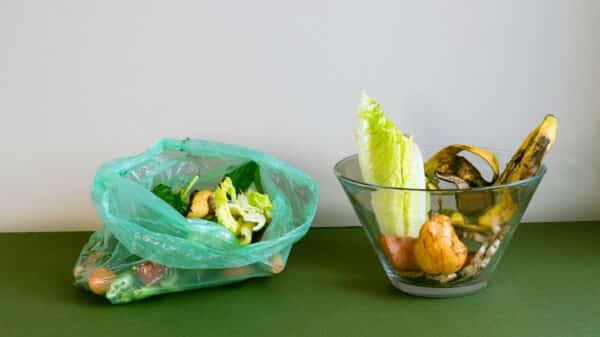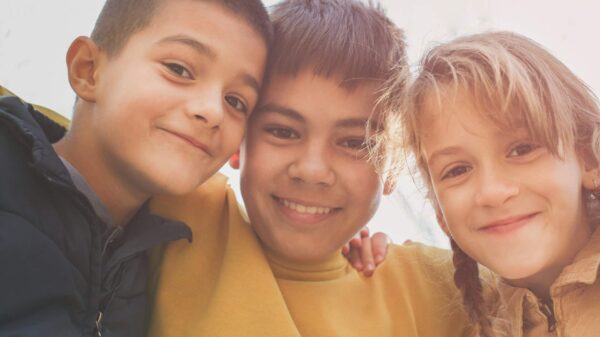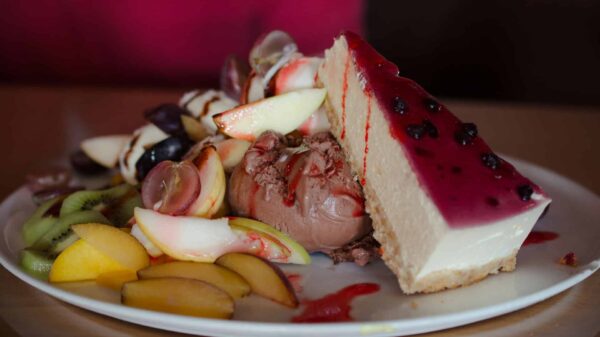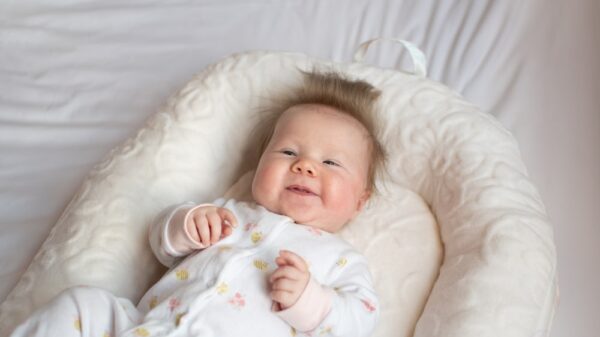A variant of this narrative was first published in 2019 and has since been updated.
Babies. Those irresistibly plump little beings, adorned with delightful folds and rolls. Their captivating freshness urges us to hold and nurture them during this enchanting phase of life, making us wish it could last indefinitely.
Mothers can take comfort in knowing that the instinct to “devour” their babies is deeply rooted in evolution, biology, and extensive research. Such impulses are not just common; they are healthy.
Infants are inherently crafted to draw our affection. With their large, expressive eyes, small noses above pudgy lips, and chubby limbs, they present an endearing image that makes us want to care for them—and yes, even figuratively “consume” them.
These emotions are part of an evolutionarily developed bonding mechanism that signals positive emotions and fosters strong attachments. They also alleviate stress by helping us release pent-up energy and emotional tension. A myriad of studies has elucidated the biological underpinnings of human caregiving, shedding light on the psychology behind these maternal urges.
Essentially, we are biologically predisposed to feel drawn to, nurture, and even “want to eat” anything that resembles an infant.
Evolution and science drive our nibbling instincts
Ethology, which explores human behavior and social structures from a biological perspective, supports the notion that babies possess cuteness for a specific reason: to invoke care from us.
Ethologist Konrad Lorenz defined the physical characteristics that contribute to cuteness as “baby schema.” Over time, we have unconsciously associated round faces, large eyes, and small chins with cuteness. This principle is evident in dolls, animated figures, advertisements, and even vehicle designs—such as the beloved Volkswagen Beetle.
In research published in the journal Proceedings of the National Academy of Sciences (PNAS), a team investigated how baby schema influences perceived cuteness and the motivation to care for infants among 122 college students. They employed morphing techniques on images of 17 baby faces to produce versions with both a high baby schema (considered “cute” with round features and large eyes) and a low baby schema (seen as “not cute” with narrower attributes).
Participants assessed the cuteness of the infants and their motivation to care for them. Images displaying the highest baby schema consistently correlated with a stronger urge to provide comfort and protection for those infants.
Interestingly, further studies suggest that women generally show higher interest in infants and caregiving tasks compared to men. This led researchers to hypothesize that women might exhibit a stronger response to baby schema than men and aimed to explore the neural basis of this maternal instinct.
In a subsequent study, 16 women who had not given birth viewed a random sequence of the same baby faces from the earlier research while their brain activity was monitored. During this time, the women evaluated the photos for cuteness.
Functional magnetic resonance imaging (fMRI) allowed researchers to observe brain activity, revealing that perceiving highly cute infants activated the mesocorticolimbic system—a network associated with reward. The flow of dopamine, the feel-good hormone, within this pathway affects motivation and desire and supports learning related to rewarding behavior.
The researchers concluded that viewing high baby schema infants as “cute” generates positive motivation powered by dopamine, which drives caregiving actions. This interaction within the mesocorticolimbic system provides a biological basis for human caregiving, offering insights into why we feel compelled to care for anything resembling a baby.
Related: Scientific evidence indicates a mother’s mentality is crucial for child development.
From an evolutionary standpoint, our tendency to respond to baby schema in unrelated infants is advantageous. Early humans probably evolved as cooperative breeders in social settings where the caregiving role was shared among community members—not solely by mothers.
Similar to modern alloparenting, the bonding and protection triggered by baby schema in humans are essential for species survival. To put it simply, it truly requires a village.
While cuteness may inspire us to care for anything that seems infant-like, it can also lead to overstimulation, leaving our brains feeling overwhelmed and prompting a desire to bite.
So how does this connect to our appetite for “eating” babies?
In 2015, a pair of studies conducted by graduate psychology students from the Clark Relationship Lab at Yale University shed light on this topic. Researchers Oriana Aragon and Rebecca Dyer found that excessive exposure to cute stimuli (in this case, baby schema) could trigger an aggressive response—or a counteracting expression.
Cute aggression, or “dimorphous expression,” occurs when an overflow of positive emotions leads to reactions often associated with negativity.
In their initial study, participants were shown images of exceptionally cute babies, which filled them with positive emotions and elicited aggressive expressions, prompting them to say they wanted to pinch the babies’ cheeks or “devour” them. Participants indicated feeling more positive when viewing the cuter babies compared to those that were less appealing.
“When you encounter something irresistibly cute, you experience a profound positive reaction,” explained lead researcher Oriana Aragon. “These feelings can become overwhelming, and strangely, in the presence of cuteness, our response manifests in gritted teeth, clenched fists, and expressions of wanting to—”
Aggressive phrases like “I wanna eat you” underscore a fascinating phenomenon: extreme happiness can incite violent impulses.
So, why does this occur?
It serves as a mechanism for stress relief.
Research indicates that an abundance of positive emotions can be just as taxing and overwhelming as negative feelings, adversely affecting our health. “Experiencing very high or very low emotions still triggers the release of stress hormones, which can burden the body,” states Aragon. “To help regulate those feelings and restore emotional equilibrium, we might need to express stress in a more aggressive manner.”elaborates, “We regulate emotions using different strategies. Sometimes we re-evaluate the situation, at times we suppress our feelings through sheer will, or we might distance ourselves from the emotional stimulus. This fresh insight indicates that we occasionally counter our feelings with a contrasting response, which seems to help restore equilibrium.”
In a subsequent study, Aragon and Dyer aimed to explore whether “cute aggression” elicited by infant stimuli contributes to emotional regulation and stress relief.
The results revealed that participants who displayed the most intense aggressive reactions to cute images—signifying a high level of overstimulation—also noted a decline in positive emotions five minutes later. This led the researchers to conclude that “cute aggression” assists in managing and balancing emotional states. “(P)eople who exhibit aggression appear to recover more effectively from those strong feelings,” Aragon stated.
This response proves advantageous; it’s the brain’s way of guiding us back to a more manageable emotional condition. A mother overwhelmed by feelings, whether happiness or anxiety, might find it challenging to care for her infant properly. From an evolutionary standpoint, a stressed parent is not optimally positioned for attentive caregiving, so nature has developed a mechanism to normalize emotions, keeping us alert, stable, and responsive.
The researchers’ results are consistent with other studies that have shown how expressing one emotion can help modulate another.
The insights gained from this emotional balancing act carry significant implications.
Researchers are investigating this phenomenon as a potential pathway for tackling mental health challenges. “Individuals with bipolar disorder may go through prolonged manic phases that can be detrimental to the body. This research could lead to enhanced treatments for those facing difficulties with emotional regulation,” Aragon observes.
By embracing the benefits of emotional release and equilibrium that this phenomenon offers, Aragon and Dyer advocate for further studies to deepen our comprehension of emotions and interpersonal relationships.
So, take comfort in knowing that feeling an urge to “eat” your babies is completely natural.
Cuteness drives our instinct to nurture infants, but it can also be overwhelming, prompting those aggressive reactions. This response helps mitigate stress from overwhelming joy, fostering a balance that enables us to care for and protect our children.
Regarding friends who express a wish to nibble on your baby, primatologist Susan Perry from UCLA and her colleagues suggest that harmless “social biting” might be rooted in our evolutionary past, promoting social connections and signaling positive intentions.
Feel free to nibble those delightful cheeks—it’s supporting emotional balance and helping you become an even better parent.
Image Source: Unsplash

























